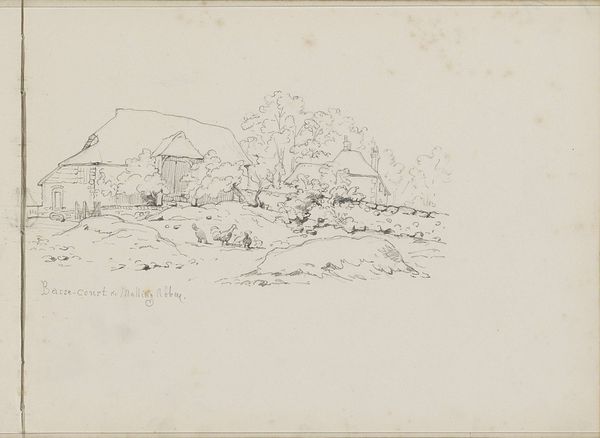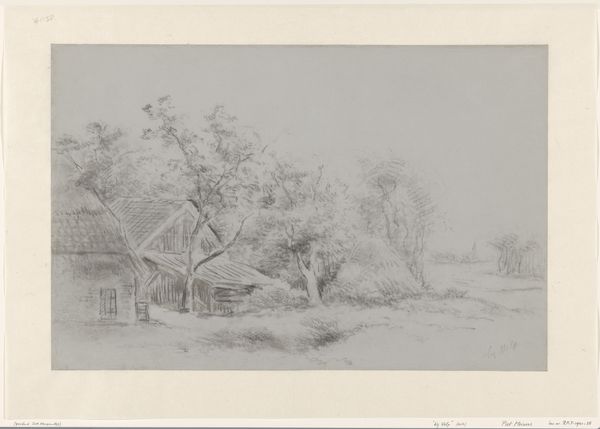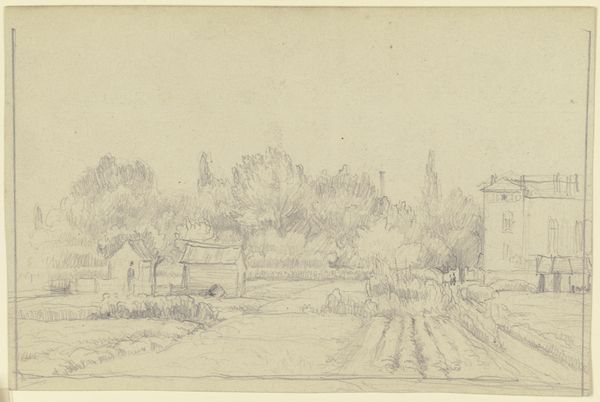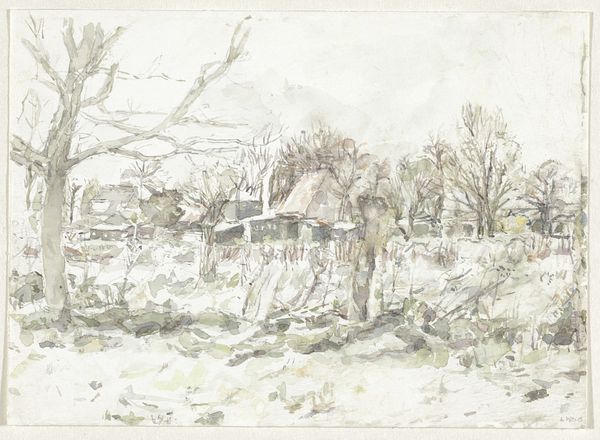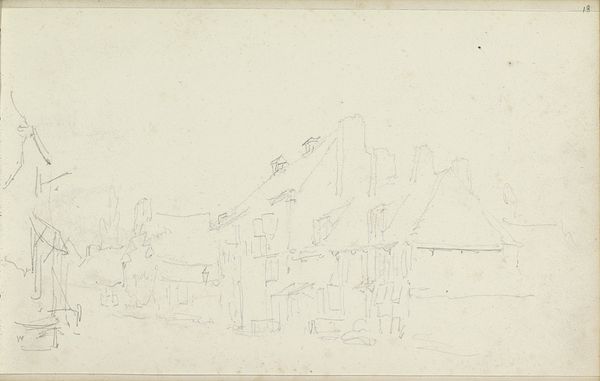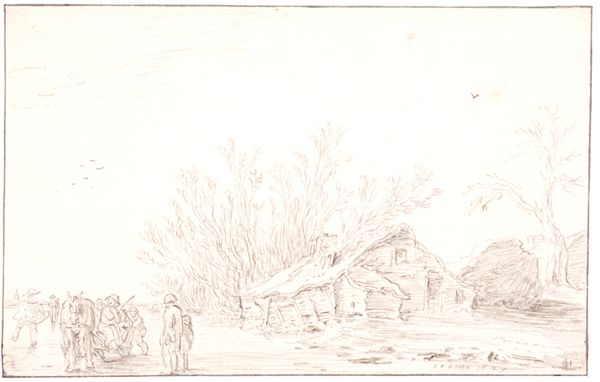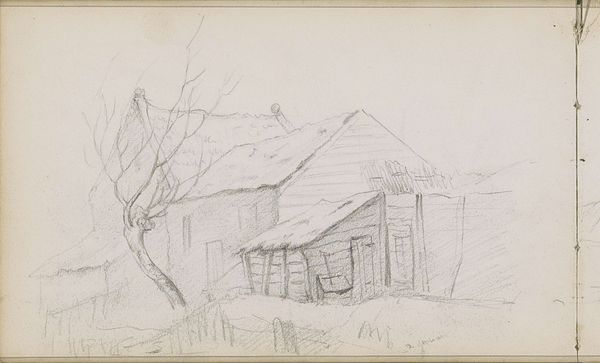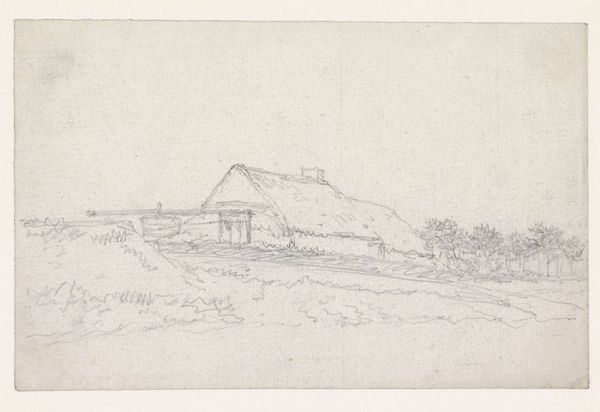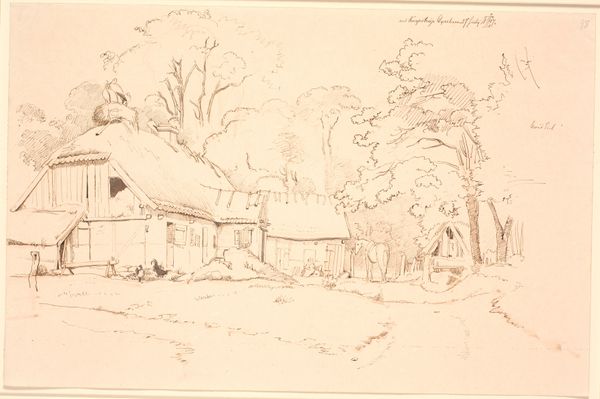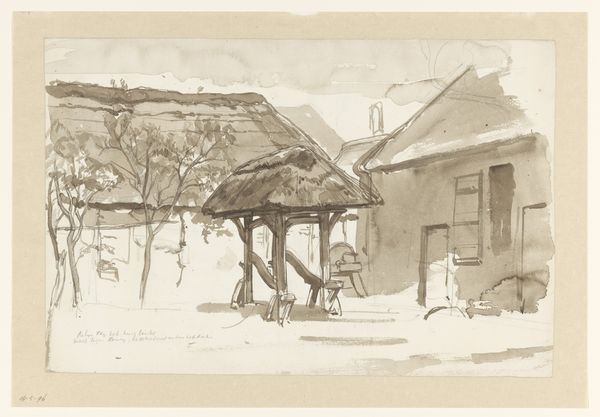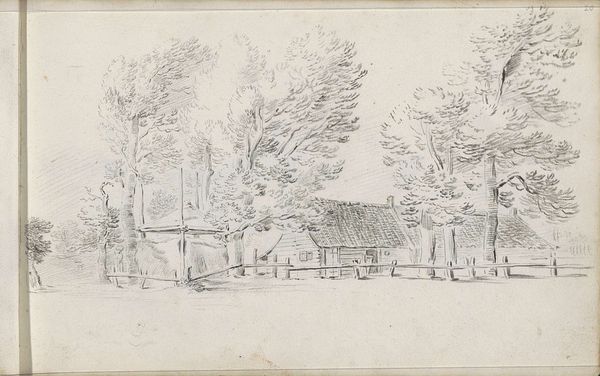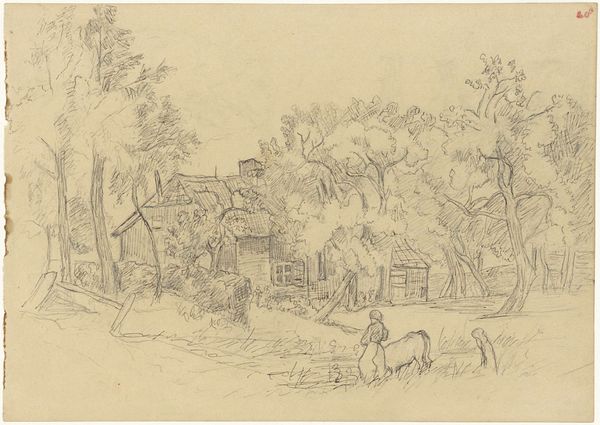
drawing, pencil
#
drawing
#
landscape
#
pencil
#
realism
Dimensions: height 164 mm, width 245 mm
Copyright: Rijks Museum: Open Domain
Curator: Here we have Lau Heidendael’s “Middelpolder,” a pencil drawing created in 2009. It’s an evocative example of contemporary realism. Editor: Oh, immediately I’m getting a kind of wistful feeling, you know? Like a memory fading at the edges. It’s so delicately rendered; you can almost feel the quiet chill in the air. Curator: Absolutely. Heidendael captures the essence of this landscape with a subdued palette. The artist employs careful and considered strokes, emphasizing the delicate balance between nature and human habitation. If we look closely, the structures—the farm buildings—appear almost nestled within the landscape. How does this interaction impact or shape our experience and understandings of the work? Editor: It makes me think about human presence and its effect on nature, right? Like, the buildings don't dominate the scene, but they are absolutely integral to it, this Middelpolder. It evokes our relationship to land, to resources. Almost makes me nostalgic for something I’ve never experienced, a deep pastoral connection. Curator: Right. We can delve a bit further. This sense of longing could tie to broader discussions around land use, particularly within the Dutch context, given the Netherlands’ complex relationship with polder landscapes and the on-going politics of reclamation, and our evolving notions of "nature." Editor: Definitely! I mean, polders are all about claiming land, it's nature altered and dictated by human desires. And there’s almost an impermanence implied by the light, airy feel of the drawing, it has captured that, doesn't it? It asks, in my view, what it truly means to be connected, what the long-term cost of such acts are, to dominate rather than to coexist. Curator: I concur entirely. Heidendael presents us with more than a simple landscape; they prompt us to consider how historical acts are linked to current questions about environmental stability, resources, and future social action. Editor: Exactly. It's quietly profound, which is its power, and why I adore it. Curator: Indeed. An artwork that stimulates so much consideration deserves our deeper contemplation and analysis. Editor: Well said. A landscape drawn in quiet lines but evoking volumes.
Comments
No comments
Be the first to comment and join the conversation on the ultimate creative platform.
